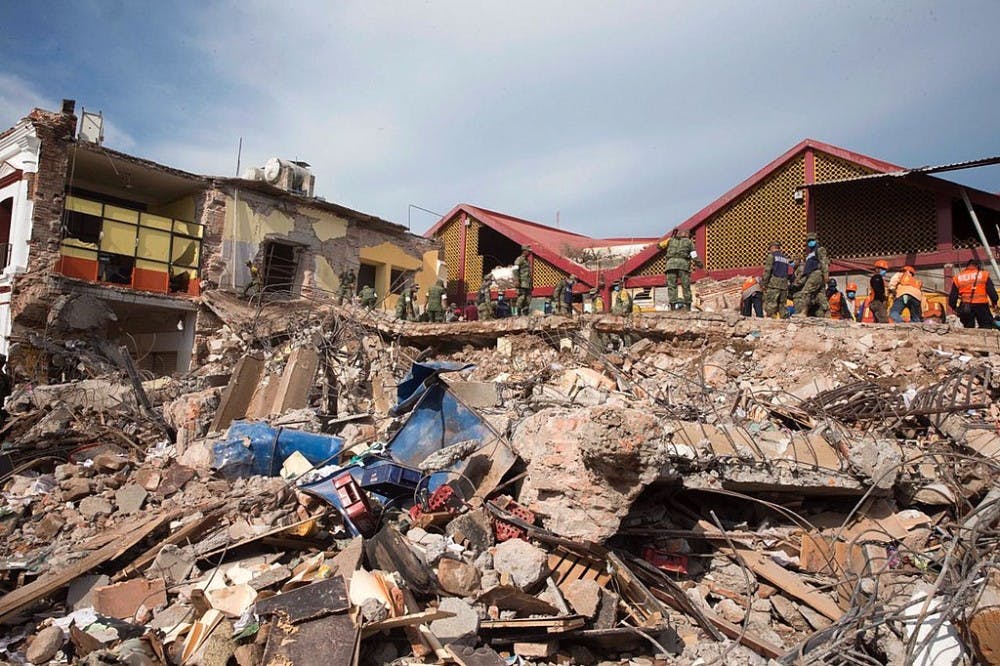During our days in elementary school science, most of us learned the basics of geology. We learned about the layers of the earth (crust, mantle, outer and inner core) and plate tectonics, among other topics. However, this was a great oversimplification of all that goes on under our feet.
Within the earth’s mantle there is a zone not everyone has heard of, the transition zone. This portion of the earth’s mantle is located between the upper and lower mantle, which locates it at a depth of between 410 and 660 kilometers (km).
Recently, through the use of earthquake data and super computers, Princeton geophysicists Jessica Irving and Wenbo Wu, in collaboration with Sidao Ni from the Institute of Geodesy and Geophysics in China, discovered irregularities within this transition zone.
The use of earthquake data is common among geologists because the strongest of them have the ability to send shock waves that travel through the core to the other side of the earth and back. The use of this data is helpful because geologists can draw conclusions from the behaviors of such waves by considering their properties.
In a similar way to light waves, shock waves travel straight through homogeneous rocks but reflect or refract when they are faced with a rough area.
For the researchers’ study, the Princeton team used data from one of the strongest deep earthquakes ever recorded: the 1994 Bolivian earthquake with a magnitude of 8.2 on the Richter scale.
“Earthquakes this big don’t come along very often,” Irving said in the press release.
“We’re lucky now that we have so many more seismometers than we did even 20 years ago. Seismology is a different field than it was 20 years ago, between instruments and computational resources.”
With the earthquake’s data, the investigators studied scattered seismic waves traveling inside the earth to get an idea of the level of roughness found within the mantle’s transition zone.
Their findings were surprising as Wu informed that “stronger topography than the Rocky Mountains or the Appalachians is present at the 660-km boundary.”
Seismologist Christine Houser, an assistant professor at the Tokyo Institute of Technology, expressed her feelings about the new findings.
“To find 2-mile (1-3 km) elevation changes on a boundary that is over 400 miles (660 km) deep using waves that travel through the entire Earth and back is an inspiring feat,” Houser said, according to ScienceDaily.
Their findings suggest that as earthquakes occur and seismic instruments become more sophisticated and expand into new areas, we will continue to detect new small-scale signals which reveal new properties of Earth’s layers.
Although they could not determine the exact height of the mountains through the use of their data, the researchers did find that the roughness was not equally distributed throughout the transition zone.
Initially, the investigators expected that this finding would provide insight into how involved the upper and lower mantle are with each other. The data collected from their research suggests that the upper and lower mantle may be more involved with each other in some areas than in others, since the rough areas in the transition zone might have formed as a result of the upper and lower mantle not mixing well, while the smoother zones might be indicative of areas where the upper and lower mantle mix well.
In addition to this, their research also provided insight into plate tectonics.
“It’s easy to assume, given we can only detect seismic waves traveling through the Earth in its current state, that seismologists can’t help understand how Earth’s interior has changed over the past 4.5 billion years,” Irving said.
“What’s exciting about these results is that they give us new information to understand the fate of ancient tectonic plates which have descended into the mantle, and where ancient mantle material might still reside.”
The wide range of roughness found by the investigators (from large to small-scale) suggests the introduction of rocks from the crust to the mantle. This led the researchers to suspect that portions of the sea floor that are pushed toward the mantle may now be resting at the level of the transition zone.





